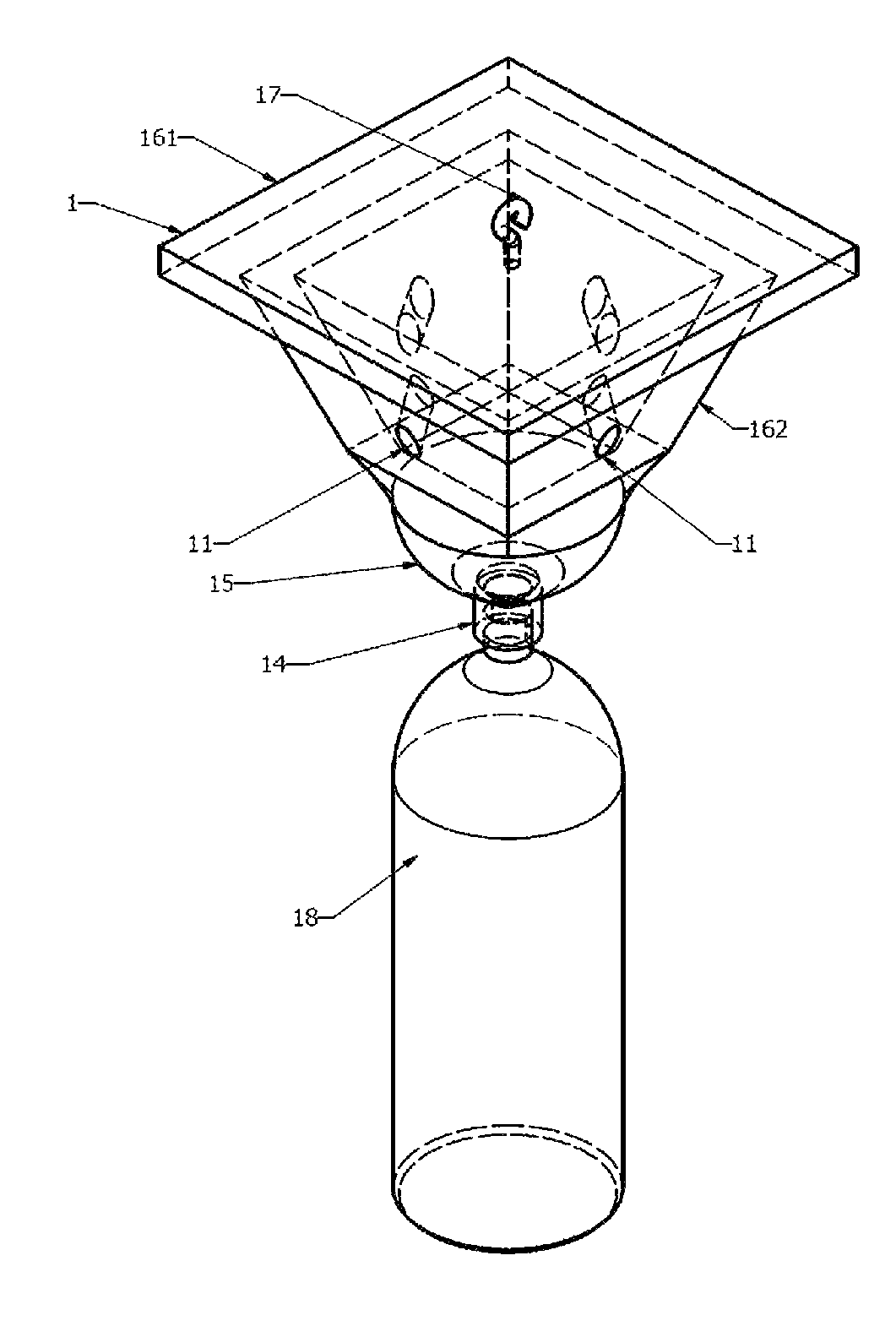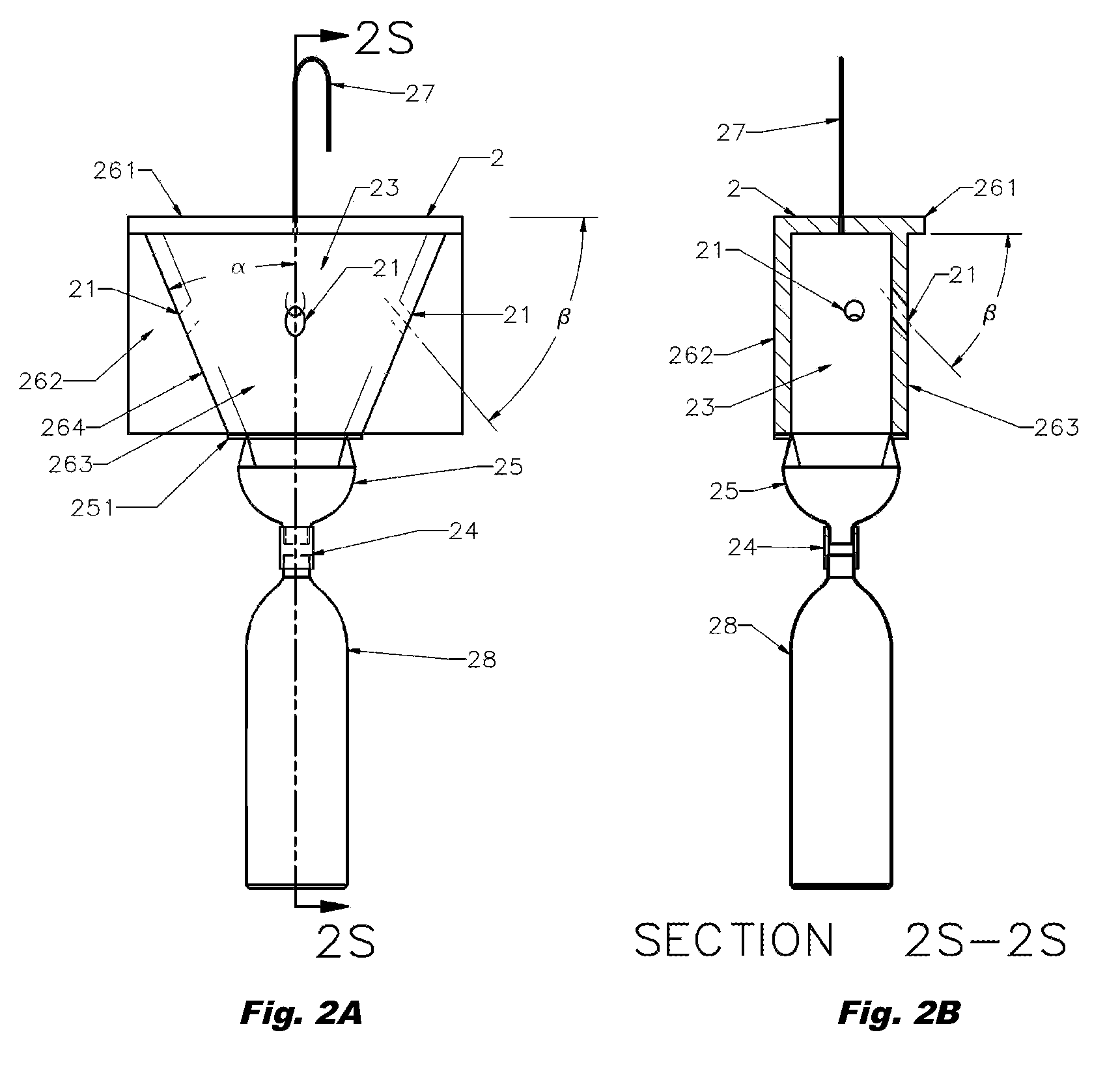Carpenter bee traps
a technology of bee traps and traps, which is applied in the field of flying insect traps, can solve the problems of high undesirable long-lasting powerful insecticides such as fipronil, pyrethroid insecticide decomposition rapidly, and eventually di
- Summary
- Abstract
- Description
- Claims
- Application Information
AI Technical Summary
Benefits of technology
Problems solved by technology
Method used
Image
Examples
Embodiment Construction
[0019]The carpenter bee trap and insecticide gel disclosed herein are the result of a detailed study of carpenter bee behavior and extensive experimentation using prototype traps around infested structures. Single traps of the disclosed designs have caught bees by the hundreds per day.
[0020]FIG. 1A depicts a carpenter bee trap of the present invention that is designed to be attractive as well as effective, resembling a bird house. Trap entrance unit 1 features entrance holes 11 leading to plenum 13. A clear sloping bottom section 15 directs bees to receptacle adapter coupling 14, and into clear plastic receptacle 18. The top panel 161 of the entrance unit overhangs side panels 162 to shelter entrance holes 11. Side panels 162 angle outward from vertical by angle a. Entrance holes 11 are angled upward from horizontal by angle b. The material surrounding entrance holes 11 is preferably wood, more preferably wood of a tree in the division Pinophyta, most preferably wood of a tree in th...
PUM
 Login to View More
Login to View More Abstract
Description
Claims
Application Information
 Login to View More
Login to View More - R&D
- Intellectual Property
- Life Sciences
- Materials
- Tech Scout
- Unparalleled Data Quality
- Higher Quality Content
- 60% Fewer Hallucinations
Browse by: Latest US Patents, China's latest patents, Technical Efficacy Thesaurus, Application Domain, Technology Topic, Popular Technical Reports.
© 2025 PatSnap. All rights reserved.Legal|Privacy policy|Modern Slavery Act Transparency Statement|Sitemap|About US| Contact US: help@patsnap.com



